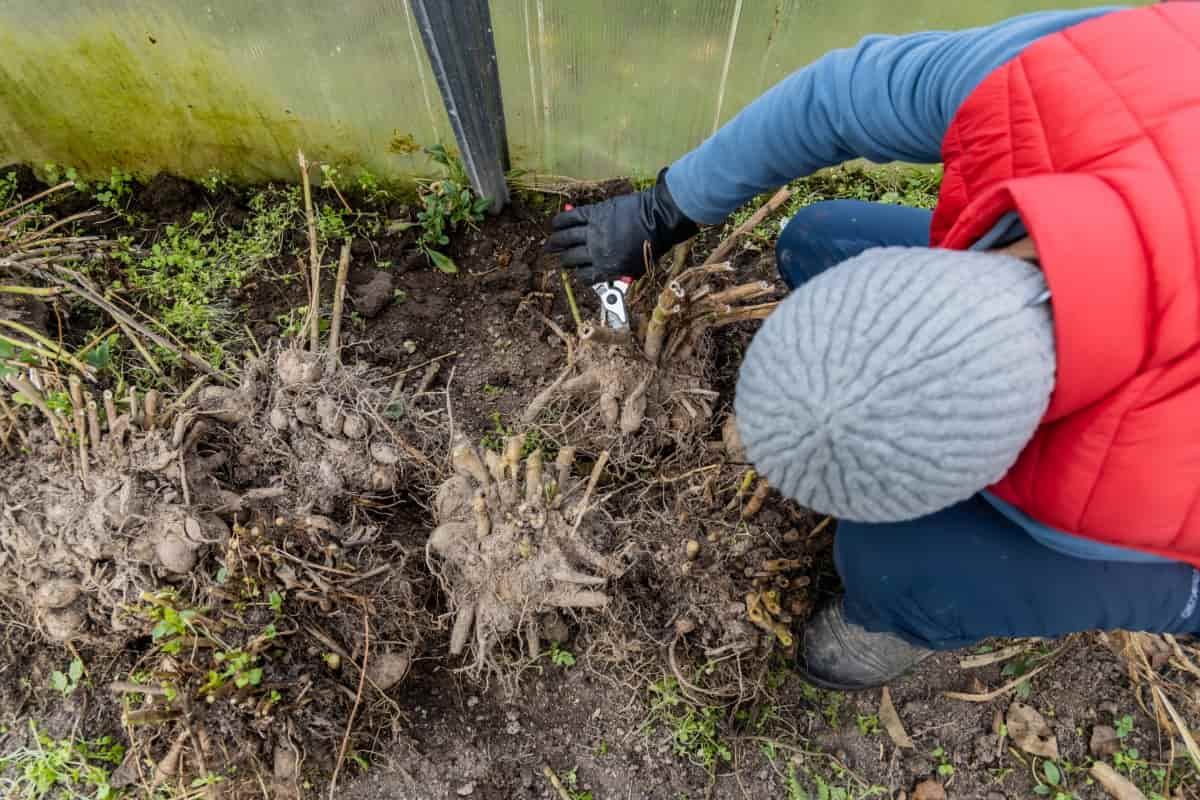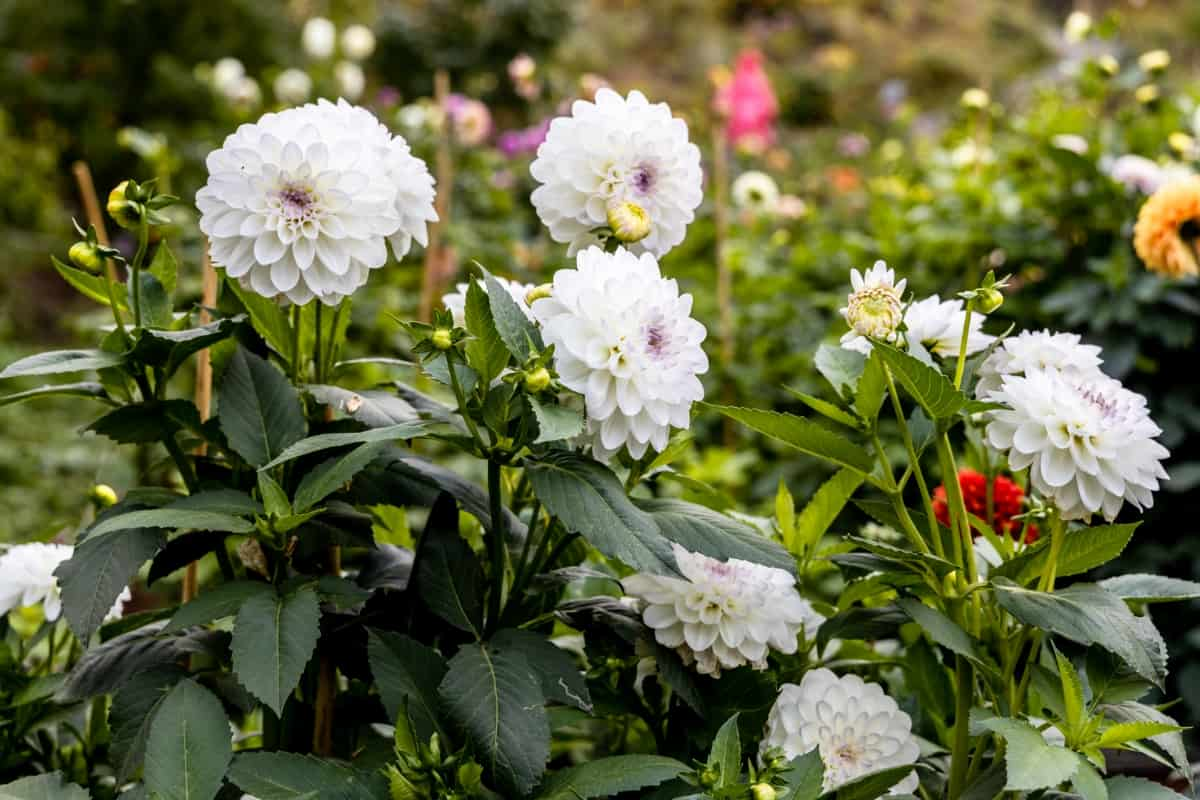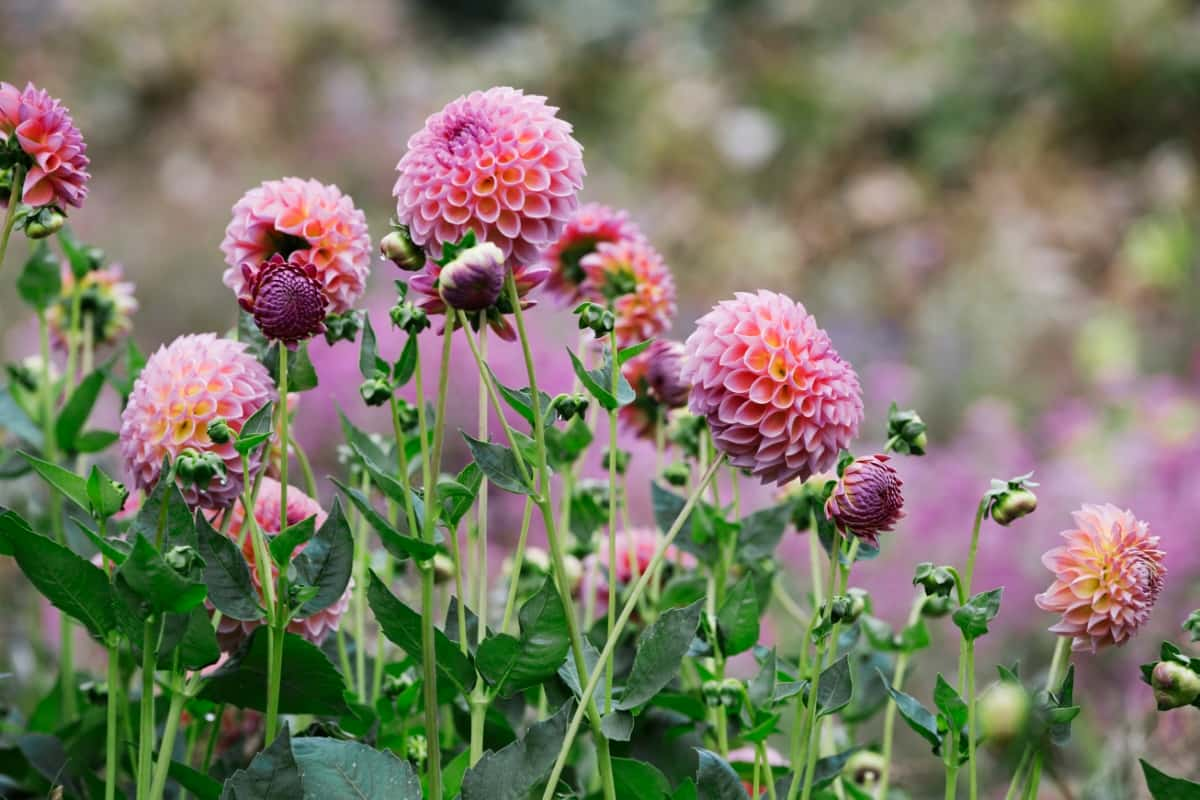Dahlias, a captivating genus of tuberous plants belonging to the Asteraceae family, add a touch of beauty and elegance to any garden. Whether you want to enhance your border garden or create stunning floral displays for special occasions, Dahlias are the perfect choice. Understanding the overwintering process of Dahlias is essential before diving into their care. Depending on your region’s climate, different methods will be required to protect these tuberous plants from frost damage.

How to Overwinter Dahlias
Understanding the Overwintering Process of Dahlias
Overwintering Dahlias is crucial in ensuring their survival and vibrant blooms year after year. So, what is overwintering Dahlias? Simply put, it protects your Dahlia tubers from freezing temperatures during winter. In warm areas where frost rarely occurs, you have the advantage of being able to leave your Dahlia tubers in the ground throughout winter.
However, it’s still essential to provide some protection by adding mulch around the plant base. On the other hand, protection for Dahlias in cold weather; if you live in a cold region with freezing temperatures and frosts that extend for several months, digging up your Dahlia tubers for storage is necessary. This process requires careful planning and proper handling to prevent any harm to your precious plants.
Preparing Dahlias for Overwintering in Warm Regions
For overwintering Dahlias in warm climates, where winters are milder, and frost is less likely to occur, overwintering Dahlias can be a bit different than in colder areas. You want to start by cutting back the foliage of your Dahlias after their first frost has hit them. This will help redirect energy toward the tubers instead of wasted on dead leaves. Once cut back, gently dig up the tubers from the ground using a shovel.
After digging up your Dahlia tubers, you’ll want to clean off any excess soil clinging to them. Be careful not to damage or break off any new buds that may have formed on the tuber during the growing season. Placing them upside down on newspaper or an old towel in a cool, dry location is ideal. Once dried out thoroughly, pack each Dahlia tuber individually in paper bags or wrap them loosely in newspaper before placing them in labeled containers such as plastic bins with ventilation holes. Store these containers in a cool basement or garage until spring arrives.
Preparing Dahlias for Overwintering in Cold Regions
Overwintering Dahlias in containers requires a bit more attention and care. For protecting Dahlias from frost, it is crucial to prepare your Dahlias for their dormant period. Start by cutting back the foliage to about 4-6 inches above ground level. This will help prevent any potential diseases or pests from lingering during winter. Next, gently dig up the tubers using a fork or shovel, careful not to damage them.
Once you have successfully dug up your Dahlias, remove any excess soil from the tubers and trim off any damaged or rotten parts. Inspecting them thoroughly is essential to ensure only healthy tubers are stored. Monitor your stored Dahlia tubers regularly for signs of decay or mold growth throughout winter. Discard any diseased ones immediately to prevent further spread.
Choosing the Right Time to Start Overwintering Dahlias
In colder regions, where frost and freezing temperatures are common, it’s recommended to start overwintering Dahlias after the first autumn frost. Waiting until then ensures that the plants have had enough time to mature and develop strong tubers fully. This will increase their chances of surviving the winter care for Dahlias. On the other hand, in warmer regions where frosts are less frequent or mild, you can start overwintering Dahlias a bit later in the season.
In case you missed it: 9 Reasons Why Your Dahlias Are Not Blooming: How to Fix It, Treatment, and Solutions

Typically, this would be around late fall or early winter when temperatures drop consistently. Choosing the right time to start overwintering your Dahlias gives them a head-start in preparing for dormancy and protecting them from potential damage caused by extreme cold or frost. Remember, timing is everything when successfully overwintering these beautiful flowers.
Digging Up Dahlias: Step-By-Step Guide for Successful Overwintering
- First, choose the right time to dig up Dahlias. Wait until the first frost has blackened the foliage in cold regions. In warm regions, dig them up before the soil gets too cold or wet.
- Start by loosening the soil around the Dahlia plant with a garden fork or spade. Be careful not to damage any tubers in the process.
- Next, carefully lift the clump of tubers out of the ground. Shake off excess soil and remove damaged foliage.
- Once you have lifted all your Dahlias, trim any remaining foliage to about 6 inches above ground level. This will help prevent rot during storage.
- Preparing Dahlias for winter, cleaning and inspecting each tuber individually is important. Remove any remaining soil and check for signs of disease or damage.
- Choose a suitable storage location that is cool and dry. A garage, basement, or crawl space can work well.
- To pack and store your Dahlia tubers properly, place them in shallow containers lined with peat moss or sawdust. Make sure they are spaced apart so they don’t touch each other.
- Throughout the overwintering period, periodically check on your stored tubers to ensure they are healthy and free from mold or rotting issues.
Selecting the Ideal Storage Location for Overwintering Dahlias
For Dahlia tuber storage tips, find a cool and dark spot. If you have one, it could be in your basement, garage, or even a root cellar. Avoid areas with fluctuating temperatures or excessive humidity, which can cause rot or mold on the tubers. Make sure the storage area has good ventilation. Proper airflow will help prevent moisture buildup and reduce the risk of fungal diseases. Consider using crates or wooden boxes with slats to allow air circulation around each tuber.
Properly Packing and Storing Dahlia Tubers for Winter
Choose a suitable storage container with ventilation holes, such as a cardboard box or a plastic crate. Insulating Dahlias during winter, line the bottom of the container with dry wood shavings or sawdust to create an insulating layer. Now it’s time to pack those tubers. Please place them in single layers within the container, ensuring they don’t touch each other.
In case you missed it: How to Grow and Care for Dahlias: Planting Instructions for Beginners

If you have multiple varieties, consider labeling each layer for easier identification come springtime. Cover the tubers with more wood shavings or sawdust until surrounded and insulated. Don’t pack them too tightly; they need some breathing room.
Monitoring and Maintaining Dahlia Tubers During the Overwintering Period
One important step is to cut back the Dahlias before storing them. Trim off dead or damaged foliage, leaving only a few inches of stem above the tuber. This helps prevent rot and encourages new growth in the spring. Preventing moisture buildup is essential to protect your tubers from fungal diseases further.
Ensure that your storage location has good ventilation and low humidity. You can also dust the tubers with a fungicide powder before storing Dahlias for winter. Adding a suitable storage medium, such as dry peat moss or wood shavings, can help regulate moisture levels around the tubers during winter. These infected tubers can spread diseases to other stored Dahlias if not removed promptly.
Bringing Dahlias out of Dormancy: Steps for Successful Spring Planting
Before planting your Dahlias outdoors, give them time to acclimate to the outdoor conditions. Start by moving them to a sheltered area like a porch or garage for a few hours each day, gradually increasing their exposure to sunlight and temperature fluctuations. As you prepare the soil where you plan to plant your Dahlias, ensure it is well-draining and rich in organic matter.
In case you missed it: The Best Fertilizer for Dahlias: When and How to Apply

When transplanting your Dahlia tubers into the garden, bury them at a depth of about 4-6 inches (10-15 cm) with the eyes facing upward. Be careful not to damage any emerging shoots during this process. After planting, water your newly transplanted Dahlias thoroughly but avoid overwatering as this can cause tuber rotting. Maintaining regular watering throughout the growing season keeps the soil moist but not waterlogged.
Conclusion
Dahlias are stunning flowers that bring vibrant colors to our gardens during the warmer months. However, it’s important to provide them with proper care throughout the year so they can thrive season after season. Overwintering Dahlias is crucial to ensuring their survival and blooming year after year.
- Ultimate Guide to Ossabaw Island Hog: Breeding, Raising, Diet, and Care
- Ultimate Guide to Juliana Pig: Raising Facts, Size, Diet, Care, and Lifespan
- Raising Lleyn Sheep: Disadvantages, Price, Uses, Characteristics, and Care
- Ultimate Guide to Meishan Pig: Breed Facts, Breeding, Raising, and Care
- Ultimate Guide to Teacup Pigs: Raising, Diet, Lifespan, Cost, and Care
- Guide to Raising Poll Dorset Sheep: Facts, Profile, Characteristics, Uses, and Care
- Ultimate Guide to Bighorn Sheep: Characteristics, Diet, Lifespan, Breeding, and Lifecycle
- Ultimate Guide to Raising Katahdin Sheep: Farming Facts, Breed Profile, Uses, and Care
- Ultimate Guide to Raising Oreo Cows: Belted Galloways Farming Facts, Profile, Uses, and Care